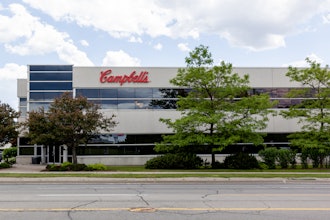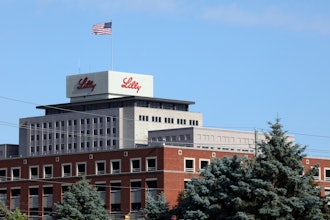One of the leading trends driving improvement in plant operations centers on the implementation of lean manufacturing principles. Championing this cause is the Lean Enterprise Institute, a non-profit education and research organization headquartered in Cambridge, MA.
Founded in 1997, LEI’s mission is to be the leading educator in maximizing value and minimizing waste. To accomplish this goal, the organization has developed lean principles, tools and techniques designed to enable these changes. The organization also publishes books and case studies, runs workshops and conferences, and conducts research, all of which are focused on helping companies “get lean.
Art Smalley Art Smalley, a former Toyota manager and a current member of the LEI faculty, recently took some time to answer our questions relating to lean manufacturing. Smalley teaches workshops on pull production and ways to solve equipment and process instability. He is also the author of the LEI workbook, Creating Level Pull, which won a Shingo Research Prize in 2005.
How does LEI define Lean Manufacturing?
The capsule definition from the third edition of LEI’s Lean Lexicon defines lean as: A business system for organizing and managing product development, operations, suppliers and customer relations that requires less human effort, less space, less capital and less time to make products with fewer defects to precise customer desires, compared with the previous system of mass production. Historically, lean production was pioneered by Toyota after World War II, and the decades following. The founder of LEI, James Womack, was part of the International Motor Vehicle Program that researched the transportation industry. They found out back in 1990 that leading producers typically required significantly less human effort, manufacturing space and capital investment for a given amount of capacity, and a fraction of the development and lead time of mass production systems, while making products in wider variety at lower volumes with fewer defects. The term “lean” was thus coined by John Krafcik, a research assistant at MIT with the International Motor Vehicle Program in the late 1980s.
Generally speaking, could you provide us with a brief overview of how things usually progress when a company starts to implement lean manufacturing principles?
It starts with the top leadership setting goals and establishing a clear view of what, why, and how. In other words, determining those things that will need to be put forth for any change effort to succeed. Sometimes this means investing in skill building or education. However, it mainly takes a commitment to getting started and fixing processes that are broken or in need of improvement. That creates a lot of positive and forward energy. Too much talking and conducting training does not produce much, and tends to result in flavor-of- the-month programs.
Are there any statistics available that help represent what kind of return on investment manufacturers can expect in taking a lean approach?
Personally, I don’t think they exist or can be quantified in a statistically rigorous manner (e.g. by correlation or regression analysis type methods). There are a lot of variables that affect ROI, and something like TPS (Toyota Production System)/Lean can affect multiple aspects, such as labor, capital, inventory, etc. You can take the ROI of Toyota making $10-$12 billion/year versus Ford or GM losing $10-$12 billion and make a comparison, but it is an apples to oranges comparison that includes many other things, such as legacy costs for retired employees, health care, etc.
How can manufacturers get their employees on-board with lean manufacturing, when sometimes these principles can result in a need for fewer personnel?
Lean/TPS is a growth strategy, not a retrenchment strategy. Toyota has out-grown all its competition, for example, and added tens of thousands of jobs. Hajime Ohba, the retired head of the Toyota Supplier Support Center, was once asked about this type of problem by a company president - after some extensive improvement had occurred. Mr. Ohba replied with something along the lines of; “You have a sales problem now, not a manufacturing problem. I’d get busy fixing that if I were you”. The bottom line is that if companies are using lean as a strategy to solely reduce people and lower labor costs, then they have probably latched onto a fairly narrow definition of the topic.
What portion of the process is usually the most difficult for the manufacturer to either understand or implement? Why?
The leadership aspect and the performance ethic. Standardized work charts or an example of kanban can be downloaded off the internet. A “how to” manual on most of the tool-based topics can be purchased for $50. But the leadership required to orchestrate the change, create the performance ethic and then drive the program to succeed is not something that can be easily written down or copied.
Are there any particular situations/companies that really stick out, in terms of their success with lean manufacturing?
The benchmark is still Toyota. They have some quality problems as of late, due to their rapid growth, but they have been at this for over 50 years, and I don’t know of anyone that comes close to them.
What are some of the most significant factors that you see impacting manufacturer efficiency, either positively or negatively?
Conceptually, TPS identifies three big wasteful practices with the terms muda, mura, and muri. They are three Japanese words worth knowing and three concepts worth learning because of the very big and very negative impact they have on efficiency. Muda is waste, which can be defined as any activity that consumes resources without creating value for the customer. Mura is unevenness in an operation. For example, a gyrating schedule not caused by end-consumer demand, but rather by the production system, or an uneven work pace in an operation causing operators to hurry, and then wait. Unevenness often can be eliminated by managers through level scheduling and careful attention to the pace of work. Muri refers to overburdening equipment or operators by requiring them to run at a higher or harder pace with more force and effort for a longer period of time than equipment designs and appropriate workforce management allow. If you can identify these problems and fix their root causes, you can make major gains.
What advice, other than contacting LEI, would you offer for companies looking to improve their operating efficiencies?
First, find the right internal leader or change agent. Sometimes a coach or a consultant in a limited capacity can help as well. At the end of the day however, companies only learn by doing. Often, this can entail some struggle and hard learning, but if it were easy then everyone would have figured it out by now. My advice is to plunge in and get started sooner rather than later.
For more information about the Lean Enterprise Institute, go to www.lean.org.
Art Smalley Art Smalley, a former Toyota manager and a current member of the LEI faculty, recently took some time to answer our questions relating to lean manufacturing. Smalley teaches workshops on pull production and ways to solve equipment and process instability. He is also the author of the LEI workbook, Creating Level Pull, which won a Shingo Research Prize in 2005.
How does LEI define Lean Manufacturing?
The capsule definition from the third edition of LEI’s Lean Lexicon defines lean as: A business system for organizing and managing product development, operations, suppliers and customer relations that requires less human effort, less space, less capital and less time to make products with fewer defects to precise customer desires, compared with the previous system of mass production. Historically, lean production was pioneered by Toyota after World War II, and the decades following. The founder of LEI, James Womack, was part of the International Motor Vehicle Program that researched the transportation industry. They found out back in 1990 that leading producers typically required significantly less human effort, manufacturing space and capital investment for a given amount of capacity, and a fraction of the development and lead time of mass production systems, while making products in wider variety at lower volumes with fewer defects. The term “lean” was thus coined by John Krafcik, a research assistant at MIT with the International Motor Vehicle Program in the late 1980s.
Generally speaking, could you provide us with a brief overview of how things usually progress when a company starts to implement lean manufacturing principles?
It starts with the top leadership setting goals and establishing a clear view of what, why, and how. In other words, determining those things that will need to be put forth for any change effort to succeed. Sometimes this means investing in skill building or education. However, it mainly takes a commitment to getting started and fixing processes that are broken or in need of improvement. That creates a lot of positive and forward energy. Too much talking and conducting training does not produce much, and tends to result in flavor-of- the-month programs.
Are there any statistics available that help represent what kind of return on investment manufacturers can expect in taking a lean approach?
Personally, I don’t think they exist or can be quantified in a statistically rigorous manner (e.g. by correlation or regression analysis type methods). There are a lot of variables that affect ROI, and something like TPS (Toyota Production System)/Lean can affect multiple aspects, such as labor, capital, inventory, etc. You can take the ROI of Toyota making $10-$12 billion/year versus Ford or GM losing $10-$12 billion and make a comparison, but it is an apples to oranges comparison that includes many other things, such as legacy costs for retired employees, health care, etc.
How can manufacturers get their employees on-board with lean manufacturing, when sometimes these principles can result in a need for fewer personnel?
Lean/TPS is a growth strategy, not a retrenchment strategy. Toyota has out-grown all its competition, for example, and added tens of thousands of jobs. Hajime Ohba, the retired head of the Toyota Supplier Support Center, was once asked about this type of problem by a company president - after some extensive improvement had occurred. Mr. Ohba replied with something along the lines of; “You have a sales problem now, not a manufacturing problem. I’d get busy fixing that if I were you”. The bottom line is that if companies are using lean as a strategy to solely reduce people and lower labor costs, then they have probably latched onto a fairly narrow definition of the topic.
What portion of the process is usually the most difficult for the manufacturer to either understand or implement? Why?
The leadership aspect and the performance ethic. Standardized work charts or an example of kanban can be downloaded off the internet. A “how to” manual on most of the tool-based topics can be purchased for $50. But the leadership required to orchestrate the change, create the performance ethic and then drive the program to succeed is not something that can be easily written down or copied.
Are there any particular situations/companies that really stick out, in terms of their success with lean manufacturing?
The benchmark is still Toyota. They have some quality problems as of late, due to their rapid growth, but they have been at this for over 50 years, and I don’t know of anyone that comes close to them.
What are some of the most significant factors that you see impacting manufacturer efficiency, either positively or negatively?
Conceptually, TPS identifies three big wasteful practices with the terms muda, mura, and muri. They are three Japanese words worth knowing and three concepts worth learning because of the very big and very negative impact they have on efficiency. Muda is waste, which can be defined as any activity that consumes resources without creating value for the customer. Mura is unevenness in an operation. For example, a gyrating schedule not caused by end-consumer demand, but rather by the production system, or an uneven work pace in an operation causing operators to hurry, and then wait. Unevenness often can be eliminated by managers through level scheduling and careful attention to the pace of work. Muri refers to overburdening equipment or operators by requiring them to run at a higher or harder pace with more force and effort for a longer period of time than equipment designs and appropriate workforce management allow. If you can identify these problems and fix their root causes, you can make major gains.
What advice, other than contacting LEI, would you offer for companies looking to improve their operating efficiencies?
First, find the right internal leader or change agent. Sometimes a coach or a consultant in a limited capacity can help as well. At the end of the day however, companies only learn by doing. Often, this can entail some struggle and hard learning, but if it were easy then everyone would have figured it out by now. My advice is to plunge in and get started sooner rather than later.
For more information about the Lean Enterprise Institute, go to www.lean.org.


















